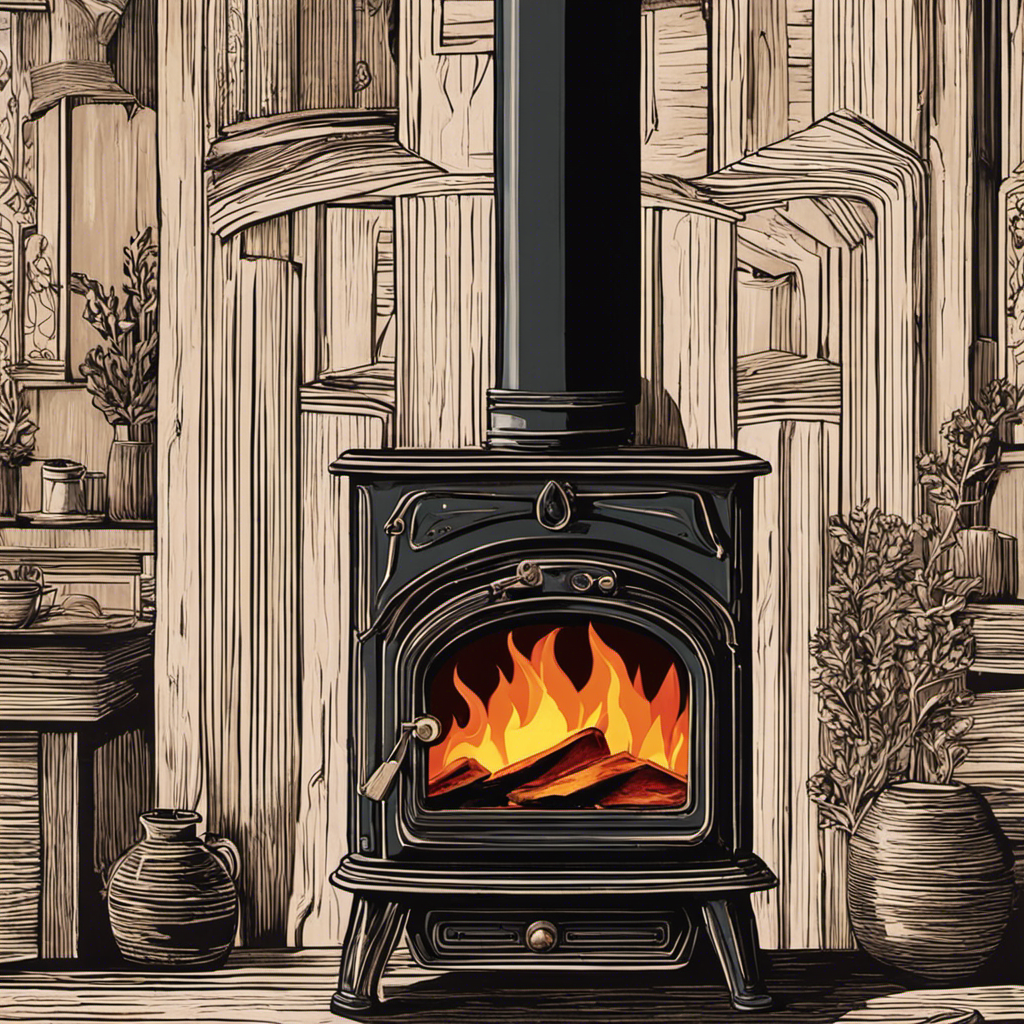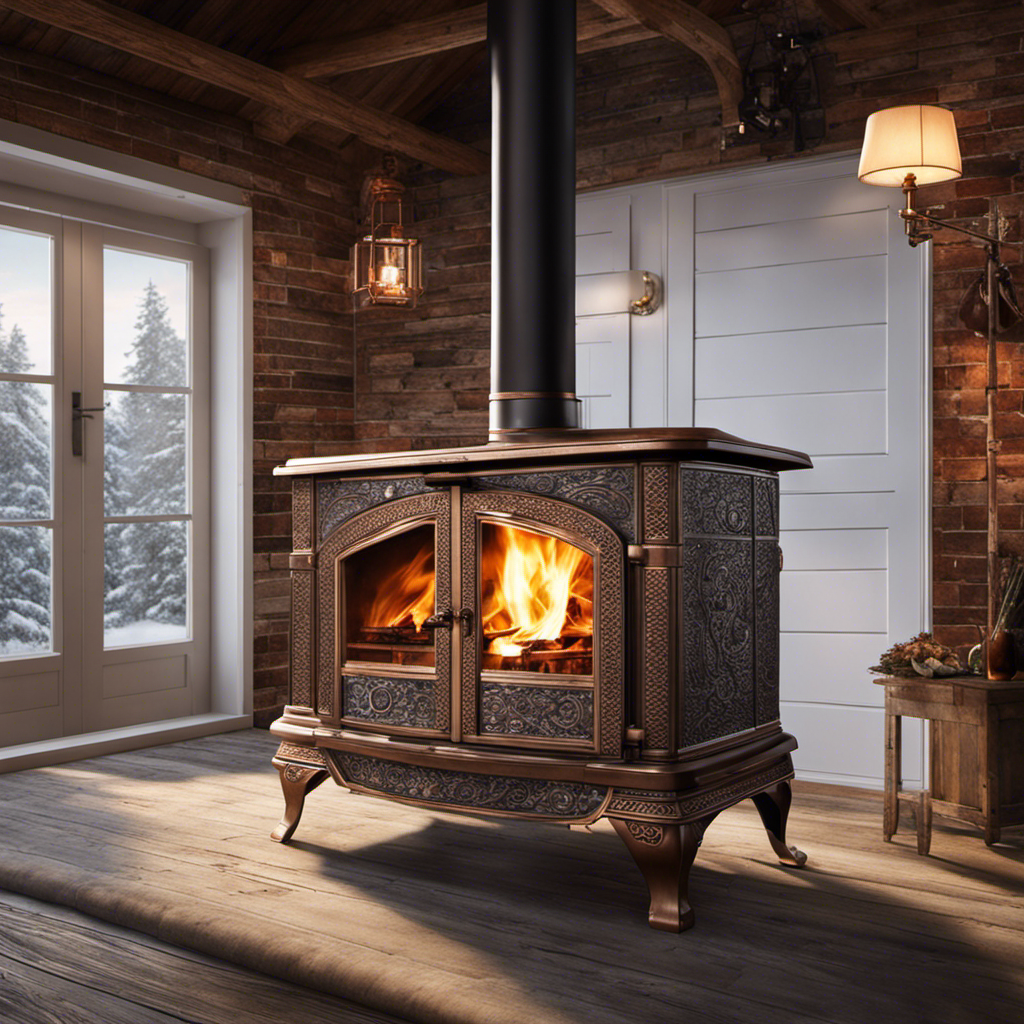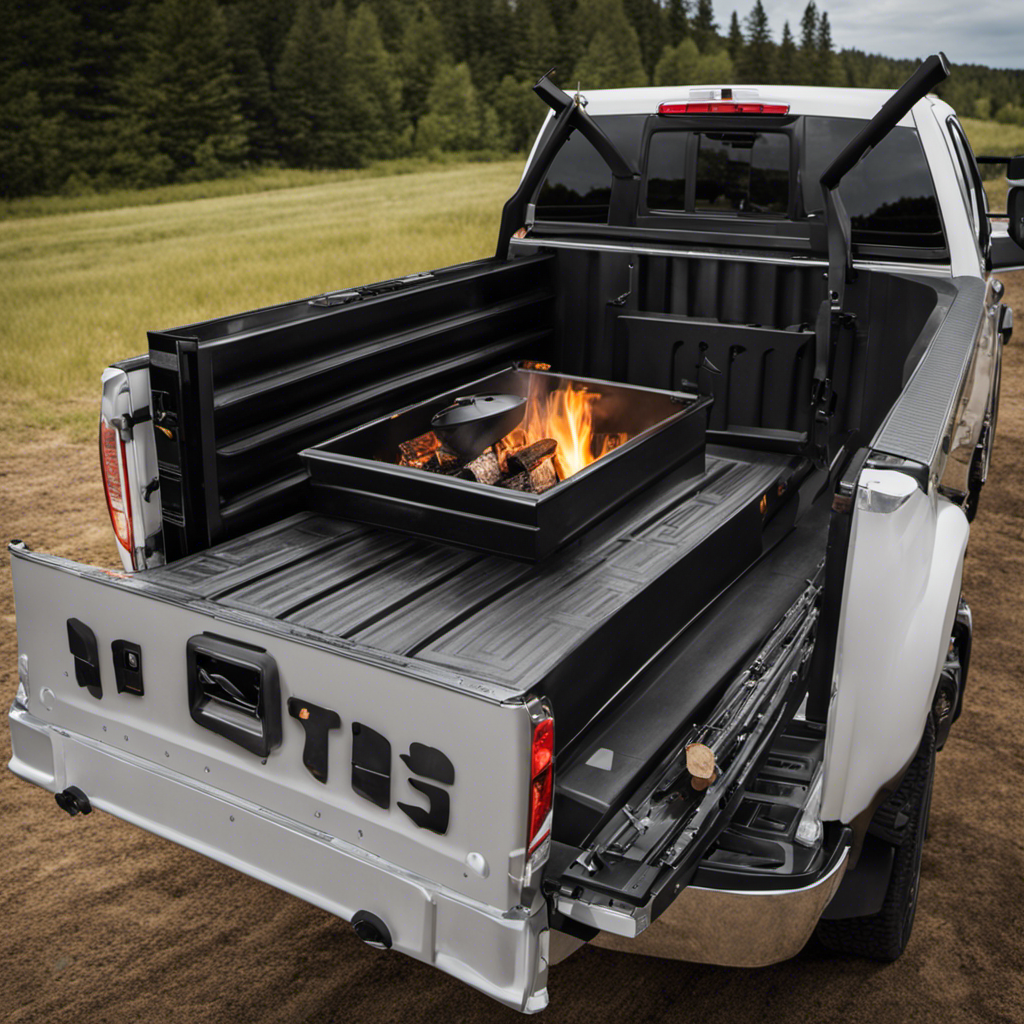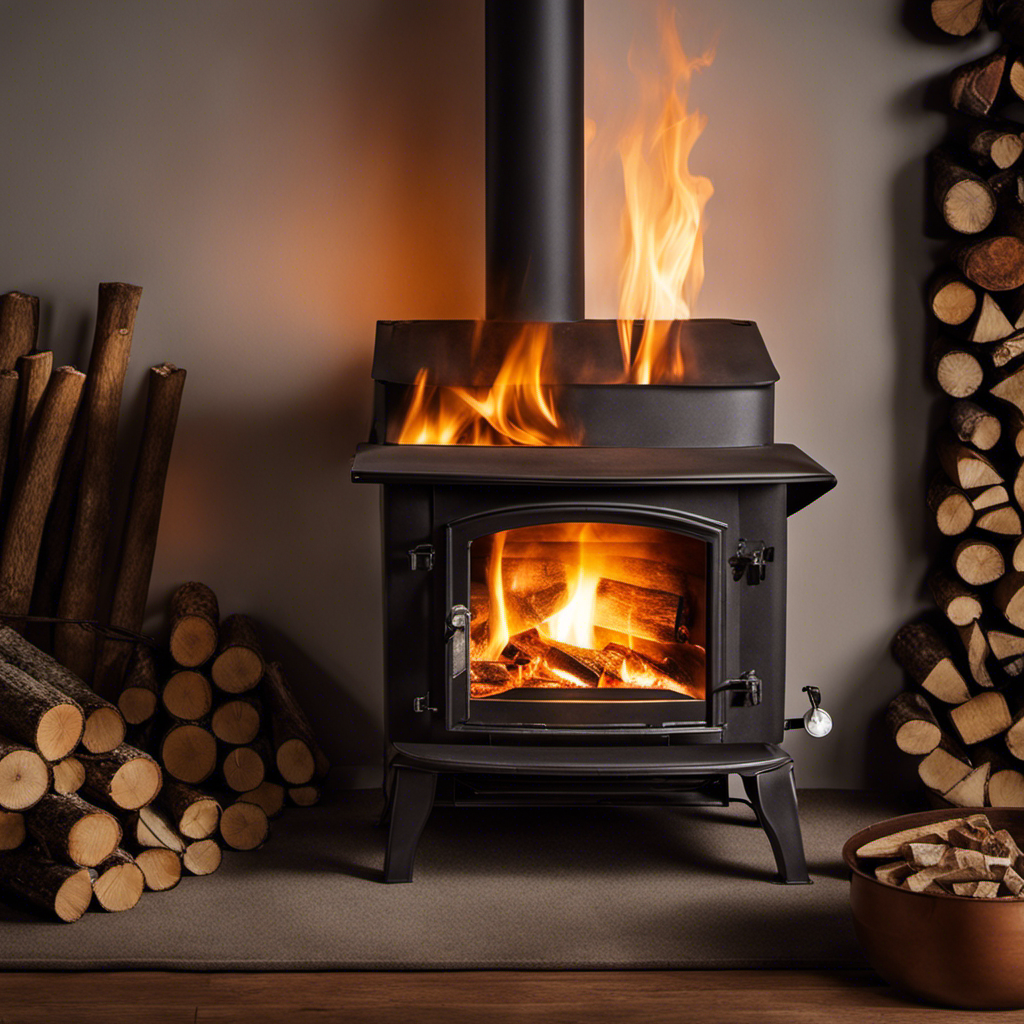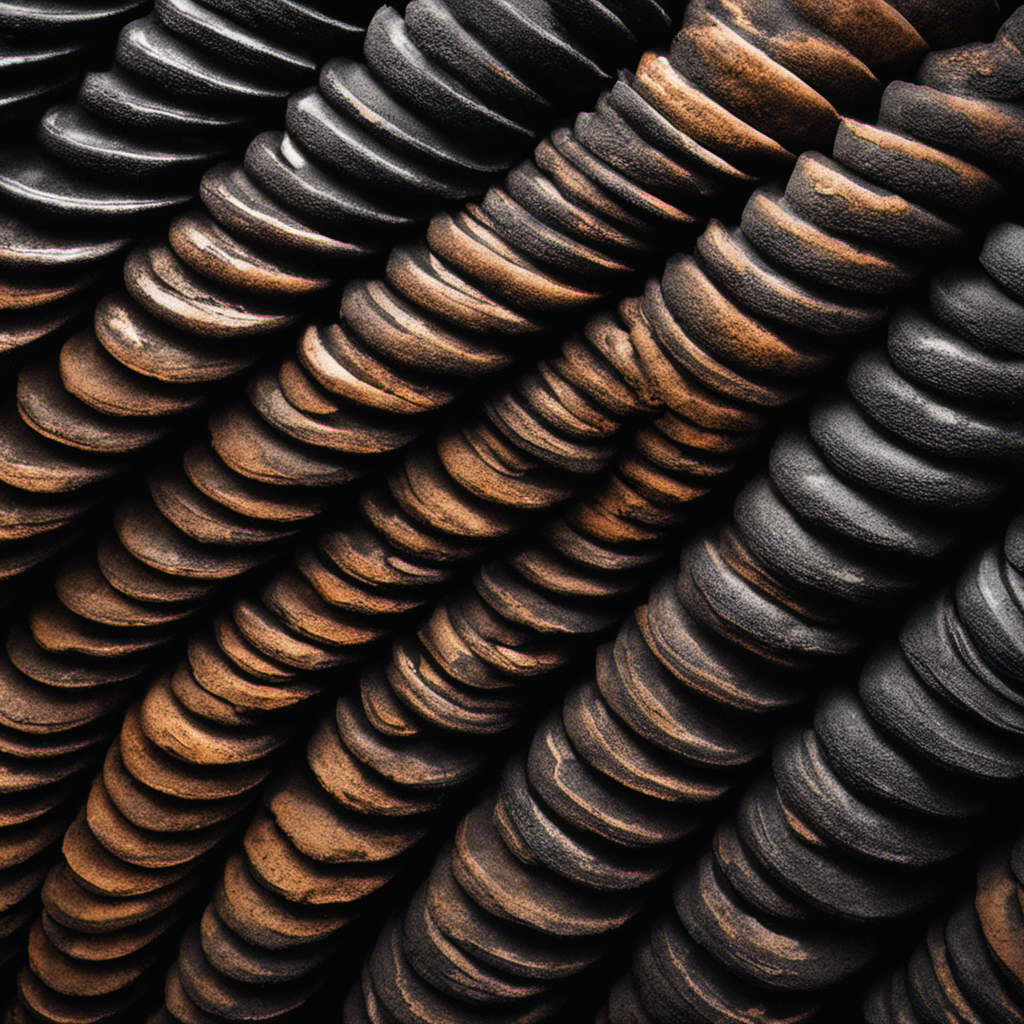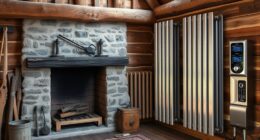Let me help you check if your wood stove is venting properly. Ensuring this is essential for both efficiency and safety.
By assessing the airflow and looking out for signs of insufficient draft, you can ensure your wood stove is operating at its best.
I’ll guide you through simple tests to determine if your stove has enough draft and troubleshoot common draft issues.
Let’s get started and make sure your wood stove is working like a charm!
Key Takeaways
- Proper draft ensures efficient burning and maximum heat output.
- Assessing airflow in a wood stove helps evaluate ventilation and maximize efficiency.
- Signs of insufficient draft include smoke escaping into the room and chimney blockages.
- Conducting simple tests and troubleshooting common draft issues can help determine if a wood stove has enough draft.
Understanding the Importance of Draft in a Wood Stove
I can’t stress enough the importance of having proper draft in a wood stove to ensure efficient burning and maximum heat output. Draft control is crucial in maintaining a well-functioning wood stove. It refers to the flow of air through the stove, which affects the combustion process.
A good draft allows for efficient burning, while a poor draft can lead to incomplete combustion and wasted fuel. To ensure proper draft, regular chimney maintenance is essential. Over time, creosote and debris can accumulate in the chimney, obstructing the flow of air.
Regular cleaning and inspection of the chimney will help maintain optimal draft. Additionally, using the draft control mechanism on your wood stove allows you to adjust the amount of air entering the firebox, further optimizing combustion and heat output.
How to Assess the Airflow in Your Wood Stove
To assess the airflow in my wood stove, I can use a simple yet effective method: using a match or a candle to check if the flame is being pulled towards the stove, indicating proper draft. This is crucial for evaluating ventilation and maximizing efficiency.
Here are four steps to assess the airflow in a wood stove:
-
Open the damper fully: By doing so, you allow maximum air intake, which will help determine the strength of the draft.
-
Light a match or candle: Hold it near the opening of the stove and observe the flame’s behavior.
-
Observe the flame movement: If the flame is being drawn towards the stove, it indicates a strong draft. This means that there’s sufficient airflow.
-
Adjust the damper: If the flame isn’t being pulled towards the stove, you may need to adjust the damper to increase the draft and improve ventilation.
Signs of Insufficient Draft in Your Wood Stove
One sign of insufficient draft in your wood stove is when the smoke escapes into the room instead of being pulled up and out through the chimney. This is a common draft problem that can occur due to various reasons.
To troubleshoot this issue, you can start by checking the chimney for any blockages such as bird nests or debris. Ensure that the damper is fully open to allow for proper airflow.
Another possible cause could be a clogged or dirty flue pipe, which can restrict the draft. It’s also important to make sure that the wood you’re using is properly seasoned, as wet or unseasoned wood can create excessive smoke and reduce draft efficiency.
Simple Tests to Determine if Your Wood Stove Has Enough Draft
The best way to determine if your wood stove has enough draft is by conducting a smoke test and checking for proper air circulation. Here’s how to do it:
-
Smoke Test:
Light a small amount of newspaper and hold it near the stove’s door. If the smoke is drawn into the stove and up the chimney, it indicates good draft. If the smoke spills out or doesn’t rise, the draft is insufficient. -
Check Air Circulation:
Ensure that the room where the stove is located has adequate air supply. Open a window or door slightly to allow fresh air in. Proper air circulation helps maintain a good draft. -
Clean the Chimney:
A clogged chimney can hinder draft efficiency. Regularly clean the chimney to remove any soot or creosote buildup. -
Use a Damper:
Install a damper in the stovepipe to control the draft. Adjusting the damper can help improve ventilation and ensure efficient burning.
Troubleshooting Common Draft Issues in Wood Stoves
I can troubleshoot common draft issues in wood stoves by checking for blockages and adjusting the damper. One of the most common problems is a blocked chimney or flue. To check for blockages, I recommend using a flashlight to inspect the chimney from the top down. Look for any debris, bird nests, or other obstructions that may be impeding the airflow. Additionally, it’s important to make sure the damper is open enough to allow sufficient airflow. If the damper is too closed, it can restrict the draft and cause smoke issues. On the other hand, if the damper is too open, it can lead to excessive heat loss. Use the table below as a reference for troubleshooting draft problems and smoke issues in wood stoves.
| Issue | Possible Cause | Solution |
|---|---|---|
| Smoke backing up into the room | Blockage in chimney or flue | Inspect chimney for blockages and clear them |
| Excessive smoke when starting the stove | Insufficient airflow | Adjust the damper to allow more air in |
| Smoke leaking around the door | Damaged or worn gasket | Replace the door gasket |
| Difficulty starting a fire | Cold chimney or flue | Pre-heat the chimney or flue using newspaper or a small torch |
| Poor burn efficiency | Improperly seasoned wood | Use only well-seasoned wood with low moisture content |
Frequently Asked Questions
How Often Should I Clean My Wood Stove to Ensure Proper Draft?
I clean my wood stove every 6 months to maintain efficiency and ensure proper draft. Signs of a wood stove with poor draft include difficulty starting or maintaining a fire, excessive smoke, and a lack of heat output.
Can a Blocked Chimney Cause Insufficient Draft in a Wood Stove?
A blocked chimney can cause insufficient draft in a wood stove. Signs of this include poor burning, smoke entering the room, and difficulty starting or maintaining a fire. Regular chimney cleaning is essential to ensure proper draft.
What Are Some Common Causes of Draft Issues in Wood Stoves?
When the draft in my wood stove is lacking, I look for signs like smoke escaping into the room. Common solutions include cleaning the chimney, adjusting the damper, and ensuring proper air flow.
Are There Any Specific Weather Conditions That Can Affect the Draft in a Wood Stove?
Weather conditions can have a significant impact on the draft of a wood stove. Factors such as wind speed and direction, temperature, and air pressure can all affect the ability of the stove to draw in air for combustion.
Can a Wood Stove With Insufficient Draft Be Fixed, or Do I Need to Replace It?
If my wood stove has insufficient draft, I can fix it by cleaning the chimney, adjusting the damper, or installing a draft inducer. Signs of a wood stove with enough draft include a steady flame and proper ventilation.
Conclusion
In conclusion, ensuring that your wood stove has enough draft is crucial for efficient and effective operation.
By understanding the importance of draft, assessing the airflow, and identifying signs of insufficient draft, you can determine if your wood stove is functioning optimally.
Conducting simple tests and troubleshooting common draft issues will help maintain a safe and reliable wood stove.
So, why wait? Start evaluating your wood stove’s draft today and enjoy a warm and cozy home during the colder months.

